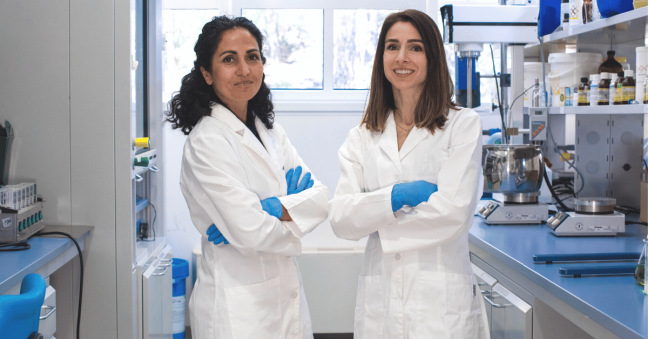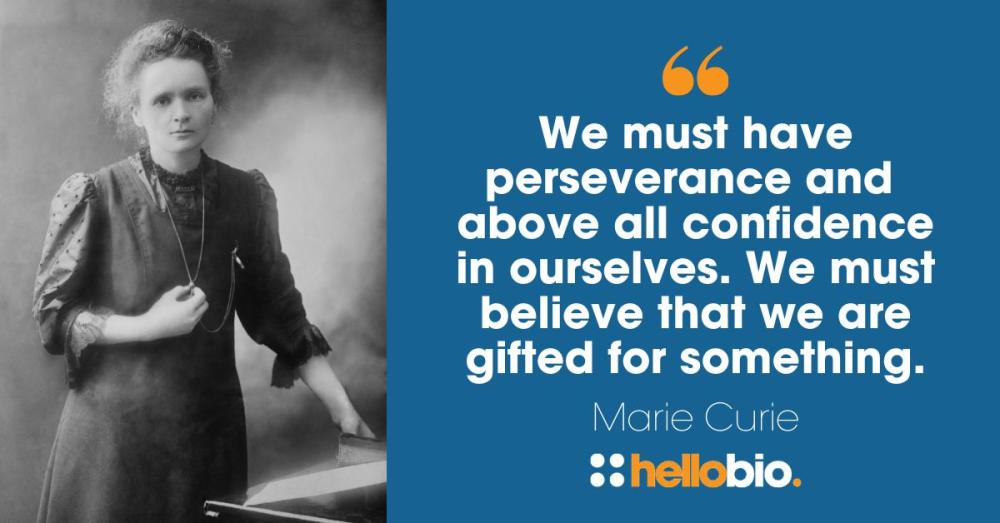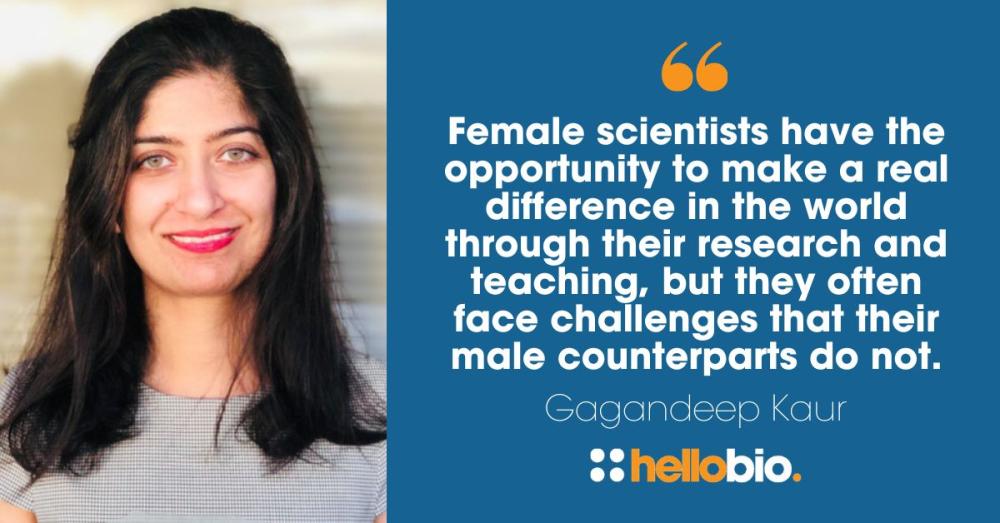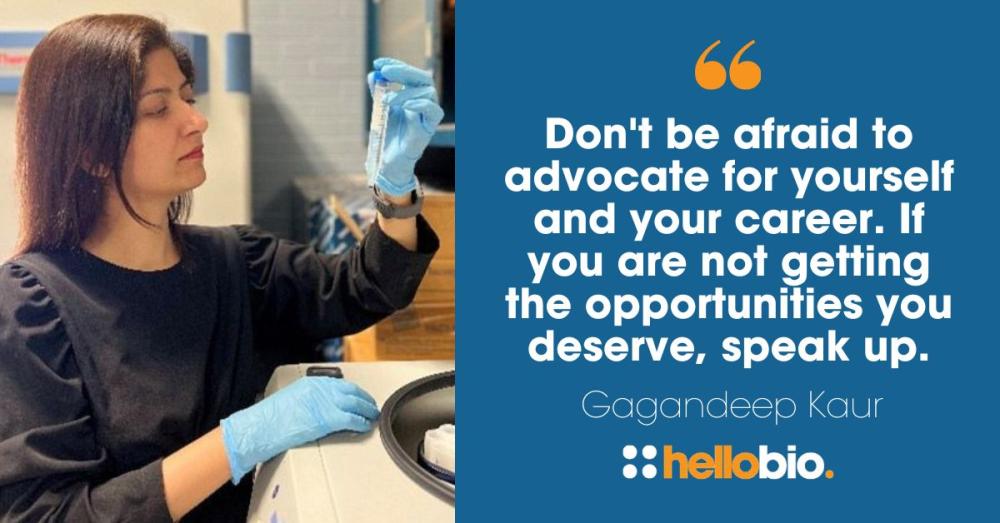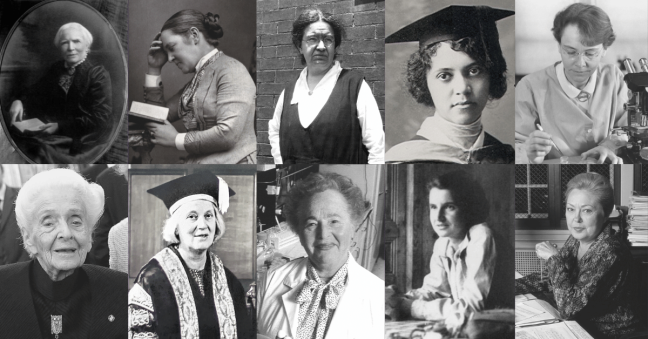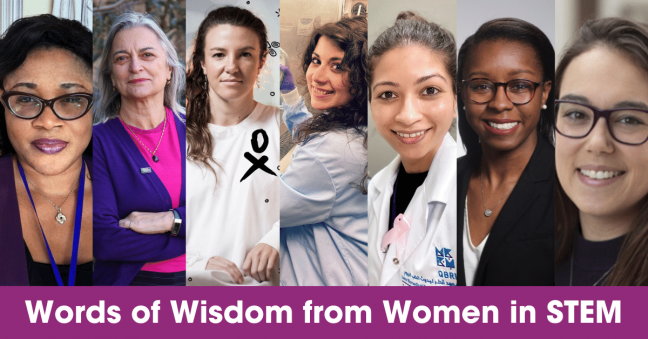Overcoming Challenges as a Woman in STEM
My name is Gagandeep Kaur and I am a tenure-track assistant professor at the Department of Chemistry, Howard University, USA. I completed my postdoctoral studies at Texas A&M University after earning my PhD in bioorganic chemistry from Indian institute of Chemistry Kanpur. My research work is focused on the development and implementation of precision biomaterials and immunotherapies to diagnose and treat or prevent chronic diseases and cancerous conditions. Kaur Lab is working towards building alliances with other HBCU and Hispanic-serving institutions (HSIs); and is committed to enabling the growth of young scientists, especially women and underrepresented minority groups.
In recent years, I’ve noticed a growing focus on increasing the number of women in STEM (not quite enough though!). This is important because women bring a diversity of perspectives and experiences to the scientific community. They can also help to break down stereotypes about who can be a scientist. In this article I will share the major challenges women scientists face in STEM and how we can overcome them.
Notable names
Female scientists have made significant contributions to academia in a variety of fields, including mathematics, physics, chemistry, biology, and medicine. Some of the most notable female scientists include:
- Marie Curie: A Polish physicist and chemist, Curie is best known for her work on radioactivity. She was the first woman to win a Nobel Prize, and she is the only person to have won the Nobel Prize in two different scientific fields.
- Rosalind Franklin: A British chemist and X-ray crystallographer, Franklin made significant contributions to the understanding of the structure of DNA. Her work was instrumental in the discovery of DNA structure by James Watson and Francis Crick.
- Grace Hopper: An American computer scientist and United States Navy rear admiral, Hopper is one of the pioneers of computer programming. She developed the first compiler for a computer programming language, and she is also credited with coining the term "bug" to describe a computer error.
- Vera Rubin: An American astronomer, Rubin made important discoveries about the rotation of galaxies. Her work helped to support the theory of dark matter, which is a mysterious substance that makes up about 85% of the matter in the universe.
- Sally Ride: An American astronaut, Ride was the first American woman in space. She flew on two space shuttle missions, and she was a strong advocate for women in science and engineering.
- Ada E. Yonath: An Israeli scientist, 2009 Nobel laureate. Ada is best known for her pioneering work on the structure of ribosomes.
- Frances H. Arnold: An American chemical engineer and 2018 Nobel Laureate. She is best known for pioneering the use of directed evolution to engineer enzymes.
- Emmanuelle Charpentier: French scientist and 2020 Nobel Laureate. She is best known for the development of a method for genome editing through CRISPR.
- Jennifer A. Doudna: An American Biochemist, 2020 Nobel Laureate. She is best known for pioneering work in CRISPR gene editing along with Emmanuelle Charpentier.
- Carolyn R. Bertozzi: An American Chemist, 2022 Nobel Laureate. She is best known for the development of click chemistry and bioorthogonal chemistry.
These are just a few examples of the many female scientists whose work has helped to advance our understanding of the world around us, and has inspired generations of young women to pursue careers in science.
Despite these examples of excellent female scientists, there is an urgent need to increase the number of women scientists in STEM. There are many STEM departments in various universities/institutes across the US where there is only one or no female faculty members.
The challenges of inequality in science
The life of a female faculty member in STEM can be both challenging and rewarding. On the one hand, female scientists have the opportunity to make a real difference in the world through their research and teaching. They can also be role models for other young women who are interested in pursuing careers in science.
On the other hand, female faculty members in STEM often face challenges that their male counterparts do not. These challenges can include:
- Pay disparity: Women faculty members earn less than their male counterparts, even when they have the same qualifications and experience. The trend is present in all private to public universities/institutes across the US.
- Lack of mentorship: Women faculty members are less likely to have mentors than their male counterparts. This can make it difficult for them to navigate the academic world and advance their careers. From my personal experience, I would say that whenever I reached out to senior professors for mentorship, they started treating me as if I am their student. It was very awkward for me. I started looking to network with female scientists and underrepresented minority group scientists to find out if they were experiencing the same thing, and sadly, they were.
- Unconscious bias: Unconscious bias can lead to women faculty members being evaluated less favorably than their male counterparts. Women scientists are seen as a lost cause if they choose to have children and a family. One of my former supervisors once told me that I would have to choose between my career or my personal life if I wanted to be in academics.
Awareness, support and action
Women scientists can face major trust issues from their own department even after being hired. The senior faculty members try to micromanage newly hired women scientists instead of mentoring them as compared to male counterparts. These can impact their hiring, promotion, and tenure decisions. Women faculty members are also more likely to experience harassment than their male counterparts. This can include verbal, physical, and sexual harassment.
These challenges can make it difficult for women scientists to succeed in academia. A majority of women scientists are opting out of academia and moving to other jobs.
However, there are several things that can be done to address these challenges, including:
- Increased awareness: It is important to increase awareness of the challenges that women faculty members face. This can help to create a more supportive environment for women in academia.
- Supportive policies: Universities can implement policies that support women faculty members. These policies can include things like pay equity, mentorship programs, family-friendly policies, and anti-harassment policies.
- Individual action: Individuals can also take action to support women faculty members. This can include things like speaking up against discrimination, mentoring women faculty members, and supporting anti-harassment policies.
Additional support could include providing more funding for research led by women, creating more opportunities for mentoring and networking, and addressing the challenges that women face, such as unconscious bias and harassment.
Be prepared, be persistent
Despite the challenges, female faculty members in STEM can be successful if they are prepared and persistent. Here are a few tips for young female faculty members in STEM who want to be successful:
- Be persistent: Don't feel disappointed when you face the above stated challenges. Keep applying for awards, grants, and funding to create more opportunities.
- Find a mentor: Find a senior faculty member who can help you navigate the academic world and advance your career. Some of the ways for finding mentors and networking which helped me personally are ChemWMN, ACS Women's Chemist Committee, Women in Biochemistry and Molecular Biology Committee and Empowering Women in Organic Chemistry: EWOC. I met one of my mentors, Dr. Laura Sanchez, through ChemWMN and it changed my life. Her trust and support helped me in the dark time of my career. I sincerely hope I could pay forward to upcoming young women scientists.
- Be involved in your department and university: Get involved in your departments and university committees which deal with the issues faced by women scientists. Reach out to the senior faculty members in the department and university to find your support group within the workplace which will enhance the chances of thriving at your job. This will also build relationships with other faculty members and staff, and will benefit you to stay up-to-date on the latest research and trends in your field.
- Don't be afraid to advocate for yourself: Don't be afraid to advocate for yourself and your career. If you are not getting the opportunities you deserve, speak up. Advertise for your research and awards on various media platforms.
Working together for a brighter future
Senior established scientists should encourage, support, and advertise (with LinkedIn posts, blogs and tweets) for young women scientists. Media appearances and interviews are excellent ways to support women scientists and inspire young minds to choose a career in STEM. By working together, we can create a more equitable and supportive environment for women in academia. By supporting female scientists, we can help to ensure that the future of science is bright and inclusive.
……
About the author
Gagandeep Kaur is a biomaterial researcher and educator with more than 10 years of professional experience in multidisciplinary research. Dr. Kaur has authored 18 peer-reviewed research publications along with two patents pending.
- Find out more about her research here: www.gagandeepkalsi.com
- Read our interview with Gagandeep: Interviews with Scientists: Gagandeep Kaur
- Connect on LinkedIn: Gagandeep Kaur, Ph.D.
More advice for women in STEM on the Hello Bio blog
Take a look at these other great articles on our blog which focus on women in STEM, celebrating their achievements and discussing the challenges they face:
- Gender Bias From A Woman In Science - guest blog by Kay M. Tye
- Promoting Diversity in STEM Online - guest blog by Mackenzie Lemieux & Rebecca Zhang
- Parenting and a Science Career: Perspectives of a Mother in Academia - guest blog by Dr Justyna Hinchcliffe
- Podcasts by Scientists: I Belong Here - podcast sharing the stories of women in STEM
- 10 Award-Winning Female Scientists You Should Know About
- Words of Wisdom from Women in STEM
- Ten Inspiring Women in Science History
- Celebrating Women in Life Science
___________________________________________
If you enjoyed this article, why not check out the other resources available on our blog. We are passionate about supporting life scientists including early career life scientists and PhD students - with really low-priced reagents and biochemicals, early career scientist grants, and resources to help with both personal and professional development. We know how tough it is - so we hope you find these helpful!
More General Support for Life Scientists
For advice on writing papers, dissertations, presenting at conferences, wellbeing, PhD support, networking and lots more, we have a huge range of articles to help - just click below:
Save up to 50% on our high purity reagents...
When you get to the stage of planning your experiments, don't forget that we offer a range of low-cost, high-purity agonists, antagonists, inhibitors, activators, antibodies and fluorescent tools (yes - they really are around half the price of other suppliers!) You can use our Quick Multi-Search Tool to search for lots of products in one go, and the range includes:
- Enzyme inhibitors and activators
- Chemogenetic ligands
- Ion channel modulators
- GPCR & ionotropic receptor ligands
- Cell biology reagents & biochemicals
Technical resources
Try our Molarity Calculator: a quick and easy way to calculate the mass, volume or concentration required for making a solution.
Try our Dilution Calculator: an easy way to work out how to dilute stock solutions of known concentrations
And finally, don't forget to check back in with our blog regularly for our latest articles. If there’s something you’d love to contribute to the community, whether that’s an interview or article, drop us a line at hello@hellobio.com
---





